Shiatsu eye massage
Shiatsu, is a traditional Japanese massage technique which involves applying gentle pressure to specific points on the body, including the eye area.This method is highly regarded for its ability to rejuvenate the skin around the eyes and reduce fatigue.
Shiatsu, which translates to “finger pressure,” focuses on stimulating the flow of blood and lymphatic fluids to enhance circulation and promote natural healing processes.
To practice Shiatsu for your eyes:
- Pressure points for lifting eyebrows: Apply gentle pressure with your index, middle, and ring fingers on the inner, outer, and centre points of your eyebrows. Press and slightly lift for about 7 seconds.
- Reducing crow’s feet: Warm your index fingers, place them at the outer corners of your eyes, and gently press and pull towards your temples for about 3 seconds. Repeat three times.
- Decrease puffiness: Use your index fingers to press the inner corners of your eyes for 3 seconds, repeat three times to reduce swelling and puffiness.
This massage can be done in the morning, evening, or whenever you feel eye strain, offering a quick and effective way to revitalise your eyes.
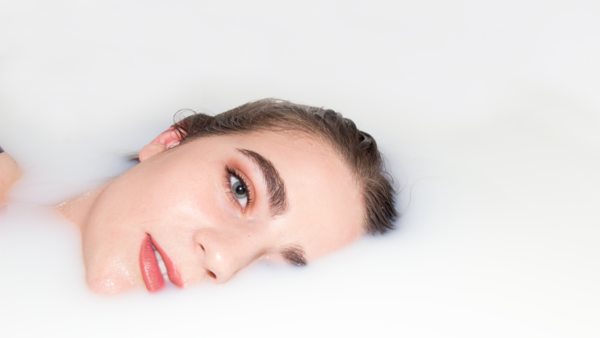
The benefits of Gankyo: Eye bathing
In Japan, Gankyo, or eye bathing, is a traditional practice that involves washing the eyes with a special solution. This helps to clean the eyes, reduce dryness, and alleviate irritation caused by dust or allergens.
A study by the Japan Society of Ophthalmic Health found that regular eye bathing can significantly decrease symptoms of dry eye syndrome and improve overall eye comfort. The practice is particularly beneficial for individuals who experience frequent eye discomfort or work in environments with high exposure to dust or allergens.
To perform eye bathing:
- Use a sterile saline solution or an over-the-counter eye wash.
- Pour the solution into a clean eye cup.
- Tilt your head back and place the cup over one eye.
- Blink several times to allow the solution to wash over your eye.
Repeat the process for the other eye. Regular eye baths can help maintain eye hygiene and prevent discomfort caused by environmental factors.
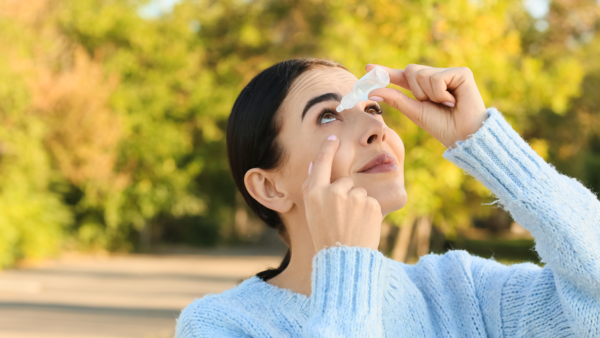
The outdoor eye health advantage
Japanese culture places a strong emphasis on spending time in nature, which has numerous benefits for eye health. Exposure to natural light and varying distances helps reduce the risk of developing myopia (nearsightedness). The natural light helps the eyes develop properly, and focusing on objects at different distances can reduce eye strain.
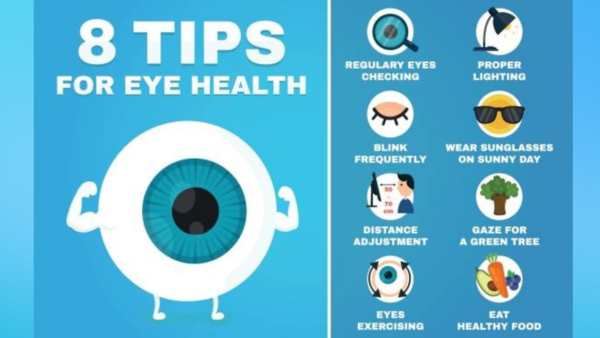
Add outdoor activities such as:
- Taking walks in parks or nature reserves.
- Engaging in outdoor sports like hiking or cycling.
- Spending leisure time in gardens or by the sea.
Regular outdoor exposure not only benefits your eyes but also promotes overall well-being.

How to deal with dry eyes
Maintaining optimal humidity levels is necessary for preventing dry eyes, a common issue in many indoor environments. In Japan, using humidifiers, especially during the dry winter months, is a standard practice to keep the air moist and comfortable.
The Journal of Ophthalmology highlights that maintaining indoor humidity levels between 40-60% can significantly reduce the symptoms of dry eyes, such as irritation and burning. Dry air can increase these symptoms, making humidifiers a valuable tool for eye health.
To maintain proper humidity:
- Use a humidifier in your home, particularly in bedrooms and living areas.
- Keep indoor plants that naturally humidify the air.
- Ensure proper ventilation to balance humidity levels.
These practices can help create a comfortable living environment and protect your eyes from the harmful effects of dry air.

A diet rich in eye-friendly nutrients
The Japanese diet is known for its emphasis on fresh, nutrient-rich foods that are beneficial for eye health. Foods such as fish, green tea, and vegetables are staples in Japanese cuisine and are packed with essential vitamins and antioxidants.
Omega-3 fatty acids are known to reduce the risk of dry eye syndrome and macular degeneration. A diet high in omega-3 fatty acids can significantly lower the risk of age-related eye diseases.
Key dietary recommendations include:
- Eating fish rich in omega-3 fatty acids at least twice a week.
- Adding green leafy vegetables, rich in lutein and zeaxanthin, which protect the retina from damage.
- Drinking green tea, which is high in antioxidants that help reduce oxidative stress on the eyes.
Adopting a balanced, nutrient-rich diet can greatly contribute to maintaining good eye health and preventing eye diseases.
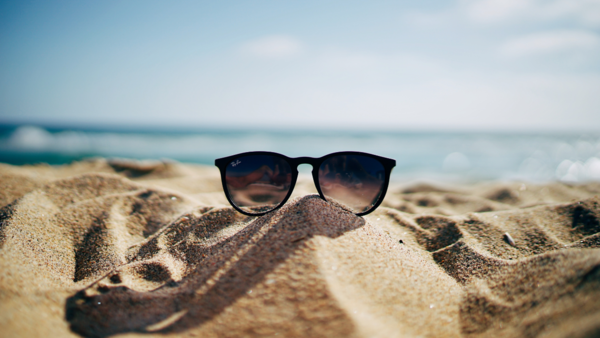
Protecting your eyes from UV rays
In Japan, wearing sunglasses is a common practice not only in summer but throughout the year. Protecting the eyes from harmful UV rays is necessary to prevent cataracts and other eye conditions.
The American Academy of Ophthalmology advises that sunglasses with 100% UV protection are important for shielding the eyes from the damaging effects of UV radiation. Long exposure to UV rays can lead to cataracts and other serious eye conditions.
To protect your eyes from UV damage:
- Choose sunglasses that block 100% of UVA and UVB rays.
- Wear sunglasses even on cloudy days, as UV rays can penetrate through clouds.
- Consider wearing a hat with a brim for additional protection.
5 common mental health concerns among teens
Things to keep in mind when taking care of eyes
Taking care of our eyes is crucial for maintaining good vision and overall eye health. Our eyes are your windows to the world, allowing we to experience its beauty and wonder. Just like any other part of our body, they need care and attention to function optimally. By integrating these eight practical tips into our daily routine, we can significantly enhance our eye health and enjoy clear vision for years to come.

Prioritise regular eye exams. Scheduling routine dilated eye exams is essential as they help detect potential issues early on when they are easier to manage. Regular checkups allow eye care professionals to monitor your vision and eye health closely, ensuring that any emerging problems can be addressed promptly.
Secondly, understanding your hereditary risk factors is key. Many eye conditions, such as glaucoma and macular degeneration, can be inherited. Informing your eye doctor about your family history enables them to tailor their care to your specific needs, helping you stay ahead of any potential problems that may arise.
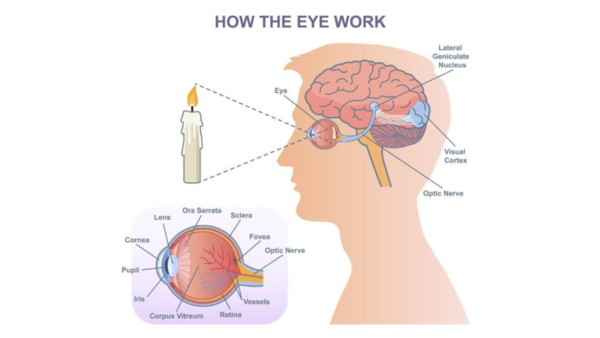
A healthy diet is another cornerstone of good eye health. Consuming foods rich in antioxidants, vitamins, and minerals supports optimal vision. Incorporate orange-colored fruits and vegetables like carrots and sweet potatoes for vitamin A, citrus fruits and red bell peppers for vitamin C, and nuts and seeds for vitamin E into your diet. These nutrients play a vital role in maintaining the health of your eyes and can help reduce the risk of certain eye conditions.
Protecting our eyes from the sun is equally important, just like the Japanese do. UV rays can cause significant damage to your eyes, much like they do to your skin. Invest in high-quality sunglasses that offer UV protection, and consider wearing a wide-brimmed hat for added defence against harmful sun exposure. This simple measure can help prevent conditions like cataracts and photokeratitis.

In today’s digital age, it’s easy to strain your eyes from prolonged screen time. To combat this, practice the 20-20-20 rule: every 20 minutes, take a 20-second break to look at something 20 feet away. This simple habit can reduce eye strain, dryness, and fatigue, ensuring your eyes stay comfortable and your vision remains clear.
Avoiding unhealthy habits like smoking is crucial for preserving your eye health. Smoking increases the risk of developing eye diseases, including cataracts and macular degeneration. Quitting smoking and limiting alcohol intake can significantly lower your risk of eye-related problems, promoting better vision over time.
Staying physically active is also beneficial for your eyes. Regular exercise improves blood circulation and helps reduce the risk of age-related macular degeneration and other eye conditions.
Lastly, practice good eye hygiene to prevent infections and other eye issues. Wash your hands before touching your eyes, avoid rubbing them excessively, and follow the recommended guidelines for contact lens care. Proper hygiene helps keep your eyes free from irritation and infection, maintaining their health and functionality.
Beat the Heat: Cooling Yoga asanas for summer wellness

